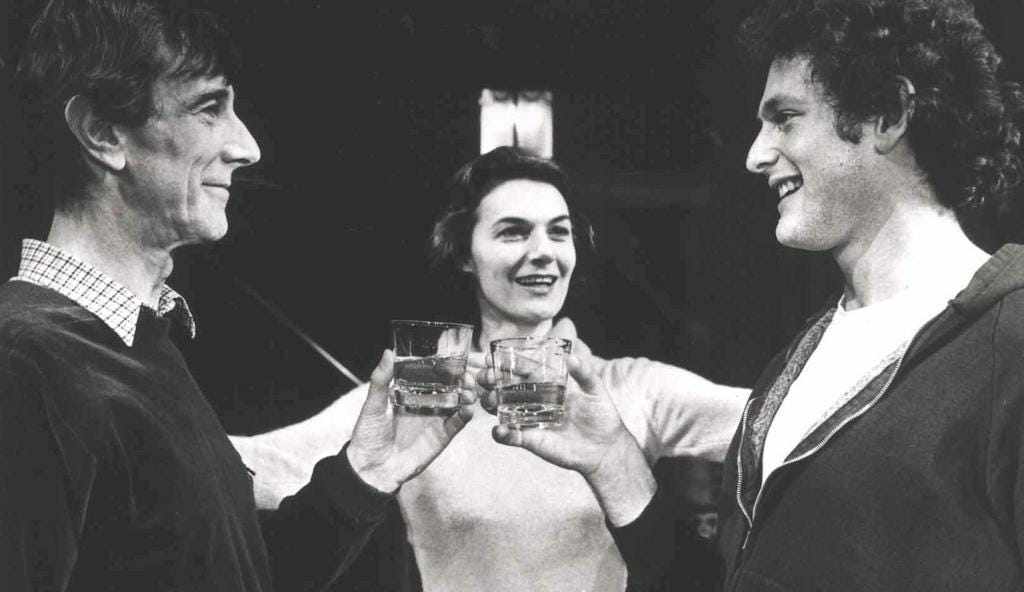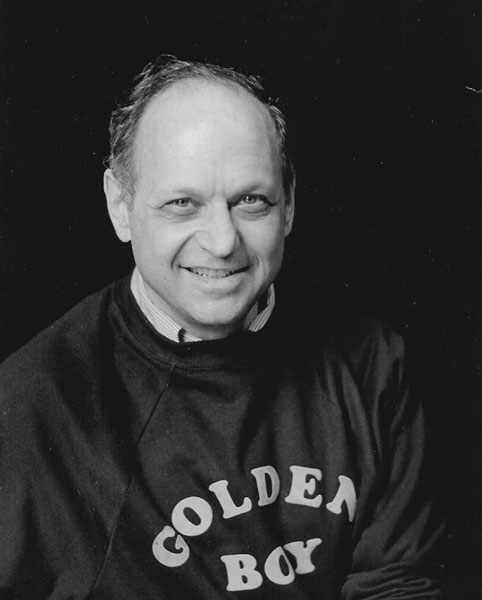
Re-watching The Wizard of Oz the other night for the umpteenth time was, as always, a joyous experience. But on this particular occasion, I took a special interest in watching Frank Morgan, the Wizard himself, essay his five different roles (six, if you count the voice of the apparition that scares the Cowardly Lion so badly, he jumps out a plate glass window). Always one of my favorite actors, researching his life took me down Morgan's own personal yellow brick road; one that resulted in his becoming one of the most beloved character actors in Hollywood. Here's his story in this edition of "Theatre Yesterday and Today."
Frank Morgan, "the Wonderful Wizard of Oz" was born Francis Philip Wuppermann on June 1, 1890 in New York City. His father, George, was born in Venezuela but grew up in Hamburg, Germany (he was of German and Spanish ancestry). A banker, he was living and working in Trinidad when he met his future wife, Josephine, herself the daughter of Commodore Joseph Wright Hancox, who operated a fleet of Hudson River boats before the Civil War. Shortly after their marriage, the couple left Trinidad for New York, where George had scored the sole rights to distribute Anostura Bitters in the U.S. and North America, the formula for which has kept it going to this day as a successful enterprise.
Thus, Morgan was born into a life of luxury as the youngest of eleven children. Sadly, three of his siblings died young; two as children and one brother, Carlos, a playwright and actor, at the age of thirty-two, while serving in the United States Army's Corps. Initially deemed a suicide, it was discovered later that he had been murdered by a fellow soldier. A child soprano, Morgan attended Cornell University and was in its glee club, but he left there unsure of what do with his life taking on such jobs as door-to-door brush salesman, advertising and real estate. He even went out west to become a cowboy. As he once told an interviewer, "I had rugged-individualist ideas. I went cow punching on a ranch near Las Vegas, but I had to work my way home. That's when Frank Wuppermann, hobo, became Frank Morgan, thespian, overnight."
His older brother, Ralph, had already had some degree of success as an actor in New York (and was the one who came up with the stage name of Morgan), and Frank joined him there, quickly usurping Ralph with a flair for comedy that his older brother lacked. Cast first in vaudeville sketches, Morgan made his Broadway debut at the age of twenty-three in 1914 with A Woman Killed with Kindness/Granny Maumee, a double bill which opened and closed in a single night. It did not dissuade him.

During the ten-year period in New York from 1917-1927, Morgan went back and forth between more than a dozen plays on stage to as many silent films on screen, until talking pictures rendered them obsolete. But in 1930, his fortunes changed when he played the title role in Topaze, a French play by Marcel Pagnol, to great acclaim. The distinct musicality of his voice made him a natural for sound pictures, which is when Hollywood came calling. From then on, Morgan reveled in the Los Angeles sunshine and lucrative studio contracts that made him a much in-demand player. He came back to the theatre only twice: briefly in 1932 for the revue Hey Nonny Nonny!, and in 1931 for what is still considered one of the greatest musical revues of all-time, The Bandwagon. With music by the team of Howard Dietz and Arthur Schwartz ("Dancing in the Dark" was written for the show), Morgan co-starred with Fred and Adele Astaire, marking their final time together before Adele married a British Lord and retired from the stage, forcing Fred to go solo.

It was at MGM, the studio that boasted it had "more stars than there are in heaven," where Morgan found the opportunities to play parts of a wide variety and range. Yes, he often resorted to a halting method of speech and a certain bumbling quality that followed him from role to role, but he was so much more than that. When certain characters required a bit of sensitivity or even pathos, Morgan was more than up to the challenge. His work in The Shop Around the Corner as Mr. Matuschek, the proprietor of a Hungarian leathergoods shop, and as an alcoholic telegraph operator during World War II in The Human Comedy, explore depths that showcase his exceptional talents.

To list all his achievements on film would take up a lot of space. But mention should be made of an early talkie, The Affairs of Cellini, in which he was so good he managed a Best Actor Academy Award nomination for what was clearly a supporting role (it was two years before that category would come to be). In 1942, he was nominated in the supporting category for Tortilla Flat and was in four films nominated for Best Picture; Naughty Marietta (1935) The Great Ziegfeld (1936, which won) and the aforementioned The Wizard of Oz (1939) and The Human Comedy (1943). So prodigious was his output, and audience likability, that MGM put him under a lifetime contract, though I suspect more out of publicity purposes than exorbitant financial renumeration. Of course, Morgan was quite well off and liked to spend his money, too. He owned a 550-acre ranch in Hemet Valley, California, where he raised cattle and was a yachtsman as well.
While researching this column, I did discover something that though hardly a secret, was fascinating to read about in finer detail. And that is for what appears to be practically his entire film career, Morgan was a high functioning alcoholic who rarely acted when not somewhat inebriated. Famously, he brought along a black case to the studio, which had a fully equipped mini-bar from which he would collect a bit of champagne (his drink of choice) and imbibe between takes. According to Aljean Harmetz in her book The Making of The Wizard of Oz, "Ray Bolger claimed it never had a detrimental effect on either his performance or his demeanor, other than when access to his drink was denied he became morose and uncooperative. According to Bolger, on at least one occasion, director Victor Fleming stopped shooting and told a disgruntled Morgan to go get himself a drink."

Certainly, heavy and daily drinking contributed to Frank Morgan's heart attack at the age of fifty-nine. He took a nap and never woke up. At the time, he had shot his first scene as Colonel Buffalo Bill in the MGM film of the hit Irving Berlin musical Annie Get Your Gun. Ironically, he was replaced by Louis Calhern, who seven years later, would take a nap and succumb to a heart attack and die in the same manner while filming Teahouse of the August Moon (he was replaced by stage veteran Paul Ford, who had created the role on Broadway).
Before concluding, two other quick Oz stories.
When a rack of clothing was brought in for Morgan and director Victor Fleming's approval, they liked a clearly second-hand coat for Professor Marvel who Morgan would play in the Kansas portion of the script. Well-worn and slightly beaten up, it felt right for the Professor Marvel character. During shooting, Morgan discovered that sewn into its lining was the name L. Frank Baum, the author of the Oz books. Allegedly, Baum's widow, Maud, confirmed it being her husband's coat, as she was still alive and living in Los Angeles at the time. However, it's still not certain if it's an apocryphal tale or not. As the film historian John Fricke says of this story on the audio commentary accompanying the Blu-Ray DVD of Oz, "If it didn't happen, it should have."
The second is that Frank Morgan's death in 1949 meant that he didn't live to see The Wizard of Oz become the classic we now know it to be. According to William Stillman, co-author of The Wizardry of Oz: The Artistry and Magic of the 1939 M-G-M Classic, the film was a hit when it premiered in 1939, but "with the average national ticket prices at 25 cents (more than half of its audiences were juvenile patrons who paid a dime or 15 cents), it was not expected to recoup its $3 million in production and promotion costs.” Between its premiere and the advent of television, theatrical re-releases were the only way to extend the life of movies with no reason to expect that The Wizard of Oz would go on to find new generations of audiences. As a young child, I was plunked down in front of my parents' black & white TV in the early 1960s completely unaware at the time that when Dorothy arrives in Oz the film undergoes a magical transformation. Once I discovered what was missing, my chief goal in life was to watch it on television in color (eventually, I succeeded).
I mention all this because when it aired in 1956 for the first time, Morgan was the only leading player who had died, never getting to appreciate how beloved The Wizard of Oz would become as did Judy Garland, Ray Bolger, Jack Haley, Bert Lahr and Margaret Hamilton. In fact, reading Frank Morgan's obituary in the New York Times, I couldn't believe it didn't lead with his having played the title character. Yes, it had only been a decade since its premiere and had yet to become a fabled classic, but I still find it shocking. Only at the finish when, lumped in among Morgan's numerous credits is The Wizard of Oz, the only instance of it in the entire obit.
If you enjoy these columns, check out Up in the Cheap Seats: A Historical Memoir of Broadway, available at Amazon.com in hardcover, softcover and e-book. And please feel free to email me with comments or questions at Ron@ronfassler.org.





















Write a comment ...